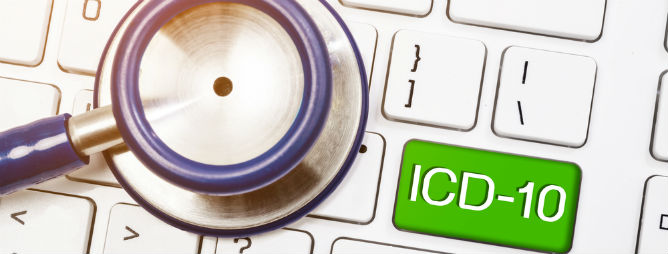Nearterm Blog
What is a Healthcare Clearinghouse & Why Use One?
Modern medicine in the United States includes a complex relationship between healthcare providers and insurance payers. Technology plays a critical role in electronic data interchange (EDI) between payers and providers, but the wide variety of software systems used can make seamless connection difficult.
The Health Insurance Portability and Accounting Act (HIPAA) addresses the importance of patient privacy regarding the protection of health information as well as the need for secure electronic data interchanges (EDI). Due to these factors, it is necessary for healthcare providers to consider their billing practices carefully.
Part of that billing process involves the option to submit claims to a healthcare clearinghouse rather than directly to insurance companies. Let’s break down the clearinghouse meaning in medical and hospital billing.
What is a Healthcare Clearinghouse?
A medical claims clearinghouse is a third-party system that interprets claim data between provider systems and insurance payers. According to the Department of Health & Human Services, a health care clearinghouse is a “public or private entity, including a billing service, repricing company, or community health information system, which processes non-standard data or transactions received from one entity into standard transactions or data elements, or vice versa.”
Typically, a healthcare claims clearinghouse will “scrub” or check a claim for errors before submitting. Once a response is received, the electronic claims submission clearinghouse transmits either a denial or acceptance back to the healthcare provider.
National health insurance clearinghouses allow providers to confidently outsource a vital function of the billing process whose difficulty is one of the current issues in healthcare administration.
Issues in Processing Healthcare Claims
Billing for hospital and provider services and supplies can be a challenging process in this complex environment. The International Classification of Diseases Tenth Revision Clinical Modification (ICD-10-CM) coding system includes over 68,000 diagnosis codes to identify procedures and treatments to be used in health care claims. Frequently, the use of medical coding services is required for the accurate coding of healthcare claims.

In 2016, there were 5,977 insurance companies in the U.S. with “$507.7 billion, or 2.7 percent, of gross domestic product,“ (III.org, 2018). Those thousands of insurance companies were exceeded by the number of healthcare providers such as hospitals, doctors, nurses, dentists, chiropractors, pharmacists, and durable medical suppliers across the country. Matters get more complicated when considering that many providers and insurance payers use incompatible software or systems of communicating protected health information (PHI). Also, different states have non-matching regulations regarding insurance and claims submission.
Problems in claim submissions can result from human error, mismatched diagnosis codes, improper calculations, coverage denials, or invalid EDI address and payer information to name a few. Issues can also arise over the mismatch between software used and establishing a secure connection between healthcare entities. Claims correction and denial management in medical billing adds to the workflow and can delay or negate payments.
Recent changes in U.S. healthcare laws and subsequent effect on insurance companies has resulted in tightening cash flows for many providers. Rising healthcare costs have greatly impacted provider profitability.
On the other hand, insurance company philosophy might consider the importance of encouraging patient responsibility for healthcare management by passing on a greater share of the medical cost as a co-pay or deductible. This has the possible negative effect of pushing patients away from costly but necessary procedures or medicine. The patient might instead follow through on treatment and slide into debt or possibly fail to pay the provider by way of personal bankruptcy. This could leave the provider eating the cost of care which impacts revenue.
Why Use a Medical Billing Clearinghouse?
Efficient claim submission involves many steps starting with the hospital that prepares a claim for services. In order to maximize revenue, it is necessary to optimize the claims process and the revenue cycle continuum. This involves analyzing the claims and billing process for possible improvements.
Contact Nearterm for more information on our healthcare revenue cycle management services today.
Error checking or claim “scrubbing” is one of the primary functions of an electronic claims clearinghouse. This allows a provider to quickly check if a claim will pass the basic requirements to be accepted by an insurance company. Insurance-specific error scrubbing decreases the time needed to successfully process a claim from days or weeks to seconds or minutes.

Providers, especially smaller ones, don’t have the knowledgeable staff or resources to match this third-party scrubbing efficiency for each insurance type. Larger electronic medical billing clearinghouses have established relationships with multiple insurance payers by ensuring software compatibility and learning their systems over long periods of time. This can help the medical clearinghouse companies explain rejections to providers and offer guidance to meet the insurance company claim expectations.
Medical clearinghouses can process single or multiple transactions and allow quick claim updates on client dashboards. There is also the added benefit of only needing one portal to manage claim information rather than a separate account for each insurance company for direct billing. Faster and more reliable healthcare coverage determination and claim submission allows providers shorter payment cycles, and as a byproduct, more accurate financial forecasts. Using an electronic healthcare clearinghouse also reduces the number of paper claims needed with subsequent positive effect on the environment.
Final thoughts on Clearinghouses and Health Insurance
While the healthcare industry is complex and has many issues, a health system or hospital can improve the efficiency and speed of electronic medical billing by using a healthcare clearinghouse. These HIPAA-covered entities can process multiple claims to a variety of insurance companies to overcome software incompatibility.
The main benefits offered by insurance billing clearinghouses are fast payment, error scrubbing and assistance, reductions in administrative costs, and finally a single source of handling claim submissions and status. The faster Medicare, Medicaid or a commercial payer are billed correctly, the faster they pay. The faster a patient is provided an accurate bill for an amount not covered by insurance, the quicker the money can be collected and utilized to improve another patient’s health.
Contact Nearterm Today for More Information
Contact the experts at Nearterm today for more information on how to optimize your billing process and medical accounts receivable.
ClearingHouses.org (n.d.) How to Select a Good Clearinghouse – 7 Things You Must Know. Retrieved from: https://clearinghouses.org/
CMS.gov (2015) Healthcare Common Procedure Coding System (HCPCS) Level II Coding Procedures. Center for Medicare & Medicaid Services. Retrieved from: https://www.cms.gov/Medicare/Coding/MedHCPCSGenInfo/Downloads/HCPCSLevelIICodingProcedures7-2011.pdf
HHS.gov (2017) Disclosures for Emergency Preparedness – A Decision Tool: Is the Source a Covered Entity? U.S. Department of Health & Human Services. Retrieved from: https://www.hhs.gov/hipaa/for-professionals/special-topics/emergency-preparedness/is-source-covered-entity/index.html
III.org (2018) Facts + Statistics: Industry overview. Insurance Information Institute. Retrieved from: https://www.iii.org/fact-statistic/facts-statistics-industry-overview
